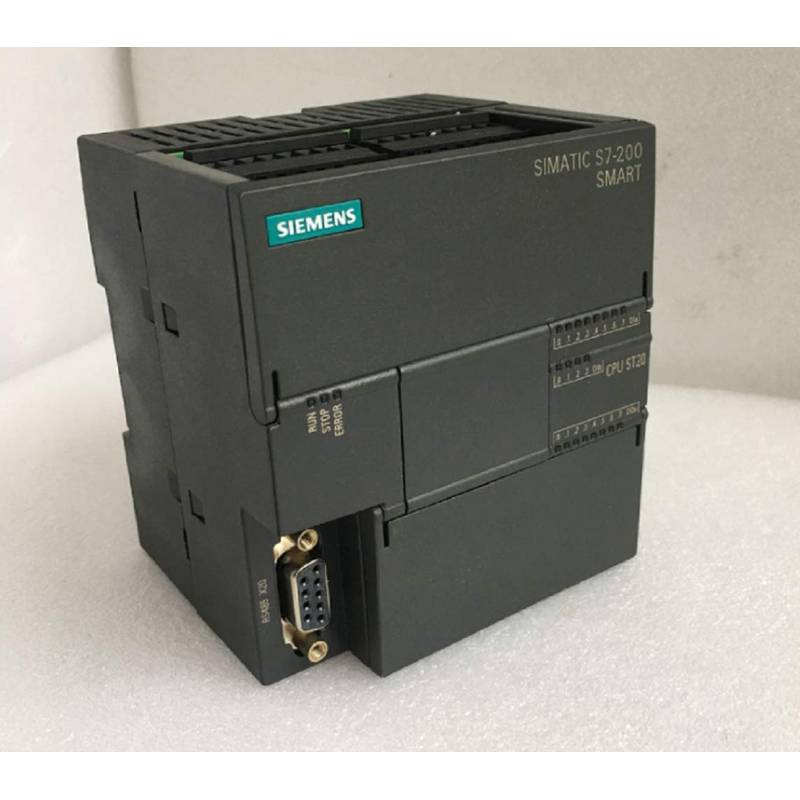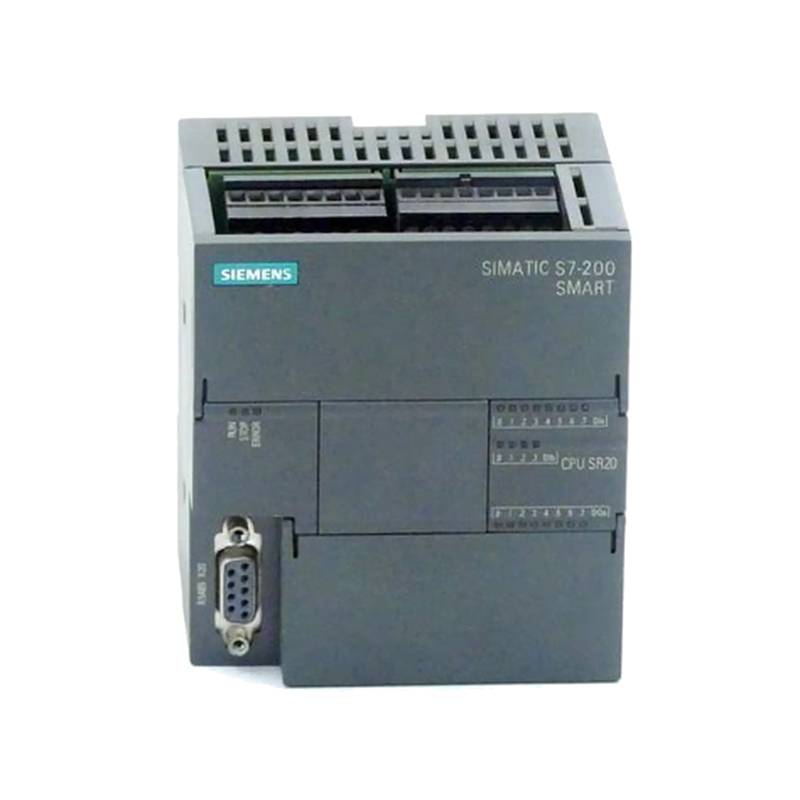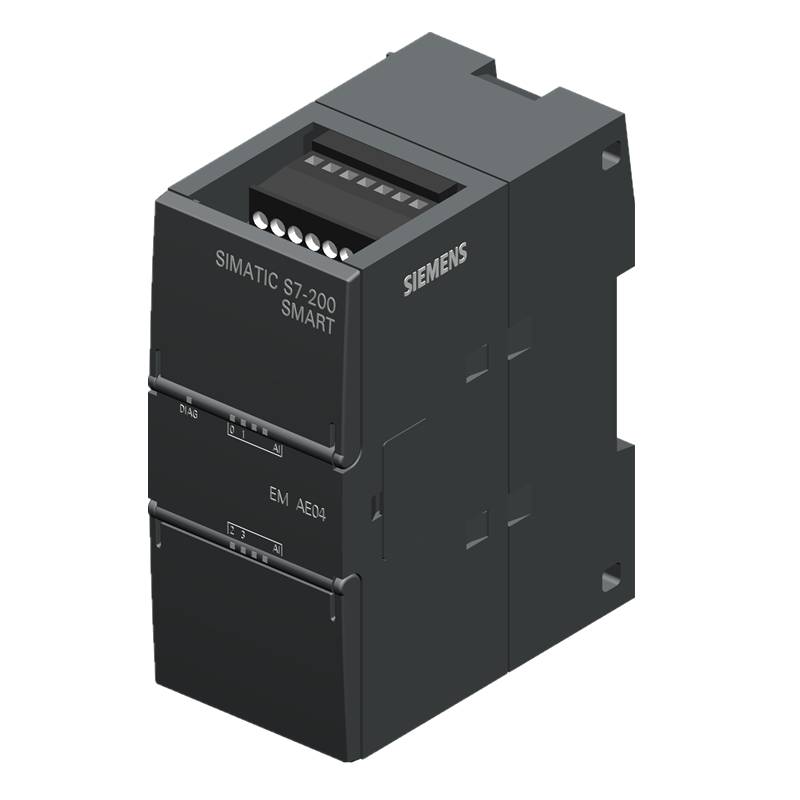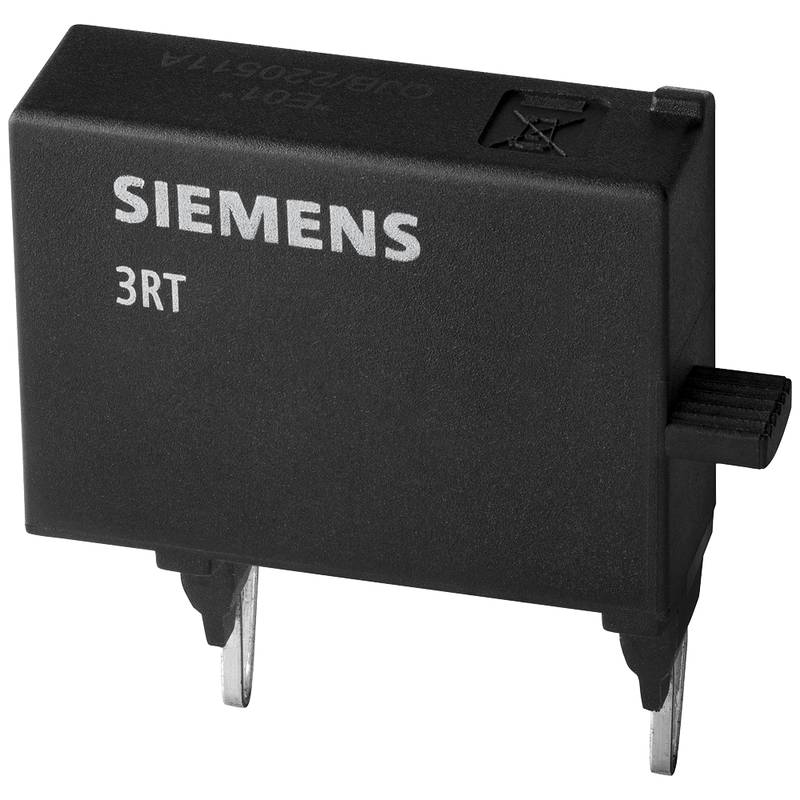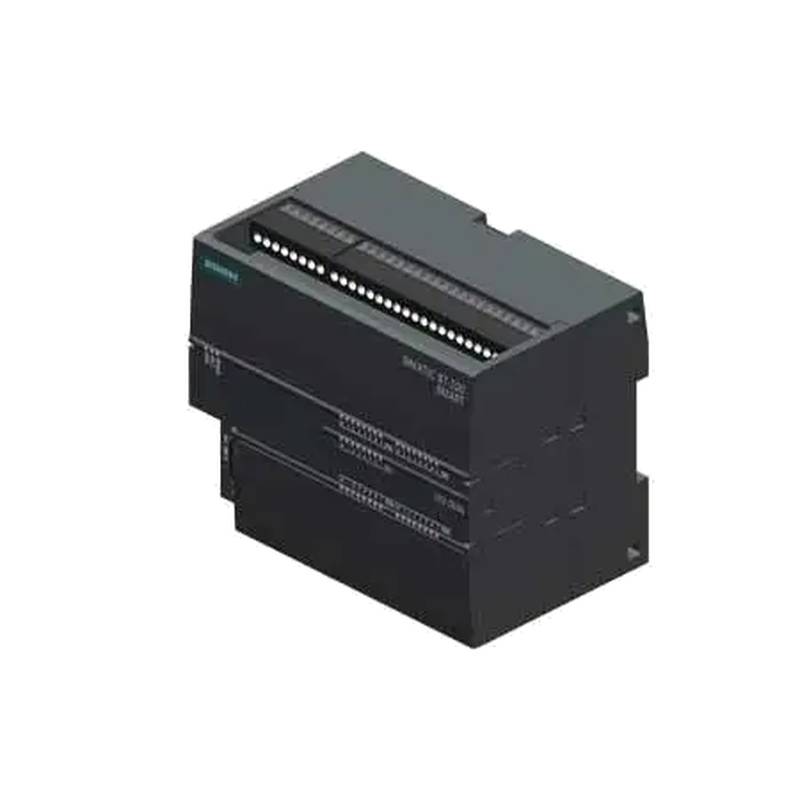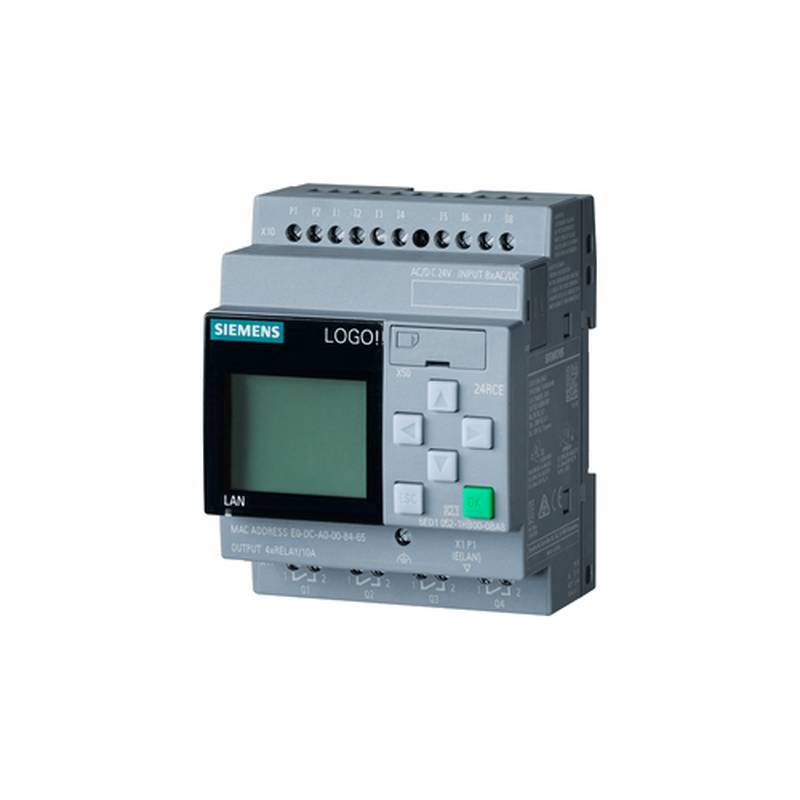
The Siemens 3RT6025-1AL20 is a robust 230VAC AC contactor designed for demanding industrial applications, offering reliable power control with a 17A rating and three normally open (NO) poles. Its key advantages lie in its compact size, high switching capacity, and superior durability, making it an excellent choice for motor control, power distribution, and automation systems. The product boasts advanced features such as auxiliary contact blocks for signaling and integrated surge suppression, ensuring operational efficiency and system protection.
Product Specifications
| Feature | Specification |
| :------------------- | :-------------------------------- |
| Product Type | AC Contactor |
| Model Number | 3RT6025-1AL20 |
| Coil Voltage | 230 VAC |
| Rated Operational Current (AC-3, 400V) | 17 A |
| Number of Poles | 3 |
| Contact Configuration | 3 Normally Open (NO) |
| Auxiliary Contacts | Typically optional, configurable |
| Enclosure Type | IP20 (finger-safe) |
| Mounting | DIN rail or screw mounting |
| Operating Temperature | -25 to +60 °C |
| Standards Compliance | IEC 60947-4-1, VDE 0660 |
Core Features & Market Positioning
The Siemens 3RT6025-1AL20 distinguishes itself through its proven Siemens quality and engineering. Its robust construction ensures a long operational lifespan, even under frequent switching cycles and challenging environmental conditions. This reliability positions it as a preferred component for critical control circuits where downtime is unacceptable. The contactor's compatibility with a wide range of Siemens industrial controls and automation platforms further enhances its market appeal, offering seamless integration into existing or new systems. Its precise switching characteristics and high breaking capacity provide efficient and safe operation for inductive and resistive loads.
Key Application Scenarios
This Siemens 3RT6025-1AL20 contactor is ideally suited for controlling three-phase AC motors up to 7.5 kW at 400V, a common requirement in manufacturing, material handling, and HVAC systems. It is also extensively used in power distribution boards for switching lighting circuits, heating elements, and capacitor banks. In automation solutions, it serves as a vital component for implementing safety circuits, interlocking mechanisms, and process control sequences. The 230VAC coil voltage makes it easily compatible with standard control power supplies found in most industrial facilities, simplifying procurement and installation.
Practical System Integration Guidance
Integrating the Siemens 3RT6025-1AL20 into existing control panels is straightforward due to its standard mounting options. It can be securely mounted on a 35mm DIN rail or directly to a panel using appropriate screws. For wiring, ensure the control circuit is de-energized. Connect the incoming power supply (L and N) to the coil terminals (A1 and A2) to energize the contactor. The main power terminals (1, 3, 5) and (2, 4, 6) are for the load, typically connected in series with the motor or other equipment. Always refer to the official Siemens wiring diagrams for specific configurations, especially when incorporating auxiliary contacts for feedback or interlocking functions. Proper sizing of upstream overcurrent protection devices is crucial for safe operation.
Operation and Risk Mitigation
Safe operation of the Siemens 3RT6025-1AL20 requires adherence to electrical safety standards. Always ensure the power supply is disconnected and locked out before performing any maintenance or wiring. The contactor is designed for ambient temperatures between -25 °C and +60 °C; exceeding these limits can affect performance and lifespan. While the 3RT6025-1AL20 offers robust protection, it's essential to install it within an appropriate enclosure to prevent dust, moisture, or accidental contact. Any unusual noises, such as humming or chattering, or failure to switch, should be investigated immediately. Common issues can stem from coil voltage fluctuations, excessive load current, or wear on the contact points over time. Regular inspection and adherence to the specified duty cycles are key to preventing operational failures.
Scalability & Long-Term Value
The Siemens 3RT6025-1AL20 is part of Siemens' extensive SIRIUS modular system, offering significant scalability and long-term value. Its design allows for the easy addition of various auxiliary contact blocks, time delay modules, or surge suppression units, adapting the contactor's functionality to evolving system requirements. Compatibility with other SIRIUS components ensures seamless integration into larger automation architectures, including those utilizing SIMATIC PLCs and HMI systems. This interoperability facilitates the implementation of Industry 4.0 concepts, such as remote monitoring and predictive maintenance, through integration with digital platforms and IIoT solutions, extending the product's useful life and enhancing overall operational intelligence.
Frequently Asked Questions (FAQs)
1. What is the maximum motor power this Siemens 3RT6025-1AL20 contactor can control?
This contactor is rated for controlling three-phase AC motors up to 7.5 kW at 400V. It is specifically designed for AC-3 duty, which applies to starting squirrel cage motors.
The 17A rating at 400V is a key parameter for determining motor capacity. Always consult the motor's nameplate and local electrical codes for precise application limits.
Ensure the starting current of the motor does not exceed the contactor's momentary current handling capability, which is typically higher than its continuous rating.
2. Can I use this Siemens 3RT6025-1AL20 contactor for DC applications?
The Siemens 3RT6025-1AL20 is specifically designed and rated for AC applications. Using it for DC loads is not recommended and can lead to premature failure or unsafe conditions.
DC switching characteristics differ significantly from AC, especially regarding arc quenching. Special DC contactors with different pole configurations and arc chutes are required for DC circuits.
For DC control, explore Siemens' dedicated DC contactor ranges, ensuring the voltage and current ratings precisely match your DC application requirements.
3. How do I wire the Siemens 3RT6025-1AL20 with auxiliary contacts?
Auxiliary contacts are typically mounted on the front or side of the contactor, snapping into place. Wire them according to the specific function needed, such as signaling "contactor on" or for interlocking.
Connect the auxiliary contact terminals to your control logic or PLC inputs. Ensure the auxiliary contacts are rated for the voltage and current of the control circuit they are switching.
Always de-energize the main circuit and control circuit before installing or wiring auxiliary contacts. Consult the auxiliary contact block's specific datasheet for terminal designations and wiring diagrams.
4. What is the lifespan of a Siemens 3RT6025-1AL20 contactor?
The lifespan of the 3RT6025-1AL20 depends heavily on the application's switching frequency and load. Siemens products are engineered for durability and high mechanical and electrical endurance.
Under typical industrial conditions with proper sizing and within specified operating parameters, these contactors can last millions of switching cycles. Factors like frequent switching, high inrush currents, and environmental conditions influence the actual lifespan.
Regular maintenance checks, including visual inspection of contacts and terminals, can help predict and mitigate potential failures, maximizing the operational life of the unit.
5. What does the 230VAC coil voltage signify for this contactor?
The 230VAC coil voltage indicates the AC voltage required to energize the electromagnet that operates the contactor. This is the standard control voltage in many industrial and commercial settings.
When wiring, ensure the power source supplying the coil terminals (A1 and A2) is a stable 230V AC supply. Voltage outside this range can lead to improper operation or damage to the coil.
This specific coil voltage makes the Siemens 3RT6025-1AL20 easily integrable into existing control panels that utilize a 230V control power distribution.
6. Can I use the Siemens 3RT6025-1AL20 in high ambient temperature environments?
The Siemens 3RT6025-1AL20 is rated for operation in ambient temperatures from -25 °C to +60 °C. Operation outside this range can compromise its performance and safety.
If operating close to the upper limit (+60 °C), derating of the current carrying capacity might be necessary. Consult Siemens' technical documentation for specific derating curves.
Ensure adequate ventilation around the contactor when installed in enclosures, especially in warm environments, to prevent overheating and premature failure.
7. What are the main advantages of using Siemens contactors like the 3RT6025-1AL20?
Siemens contactors offer high reliability, robust construction, and excellent electrical performance, ensuring consistent and safe operation in demanding industrial environments. Their compact design saves panel space.
They are part of the comprehensive SIRIUS modular system, allowing for easy integration with other Siemens components and expansion modules, providing flexibility for future system upgrades.
Siemens products adhere to international standards (IEC, VDE), offering peace of mind regarding safety, quality, and interoperability across different control systems and global markets.
8. How can I protect the Siemens 3RT6025-1AL20 from voltage surges?
For enhanced protection against voltage surges, optional surge suppression modules can be attached directly to the contactor. These modules typically use varistors or RC networks to absorb transient overvoltages.
These surge suppression units are crucial for protecting the coil from damaging spikes, especially in environments prone to electrical noise or where inductive loads are switched frequently.
Ensure the surge suppression module's specifications are compatible with the contactor's coil voltage (230VAC) and the expected surge characteristics of the electrical system.
9. Is the Siemens 3RT6025-1AL20 suitable for frequent switching applications?
Yes, the 3RT6025-1AL20 is designed for industrial applications that may involve frequent switching, provided the application stays within its rated duty cycle (e.g., AC-3 duty).
Its mechanical lifespan is rated for a high number of operations. However, very high switching frequencies can lead to increased contact wear and heat generation, potentially requiring derating or specialized contactor types.
For extremely high-frequency switching, consult Siemens' advanced contactor offerings or solid-state relays, which are designed for such intensive operational demands.
10. What troubleshooting steps should I take if the Siemens 3RT6025-1AL20 fails to operate?
First, verify that the 230VAC coil voltage is correctly applied to terminals A1 and A2 when the control signal is active. Check for loose wiring connections at the coil terminals.
Inspect the main power terminals for any signs of overheating, arcing, or corrosion. Measure the continuity of the main contacts when energized and de-energized to check for stuck or open contacts.
If the coil is energized but the contactor does not pull in, the coil may be faulty. If the contacts are welded shut, the contactor will likely need replacement. Always follow safety lockout procedures before inspecting.


















